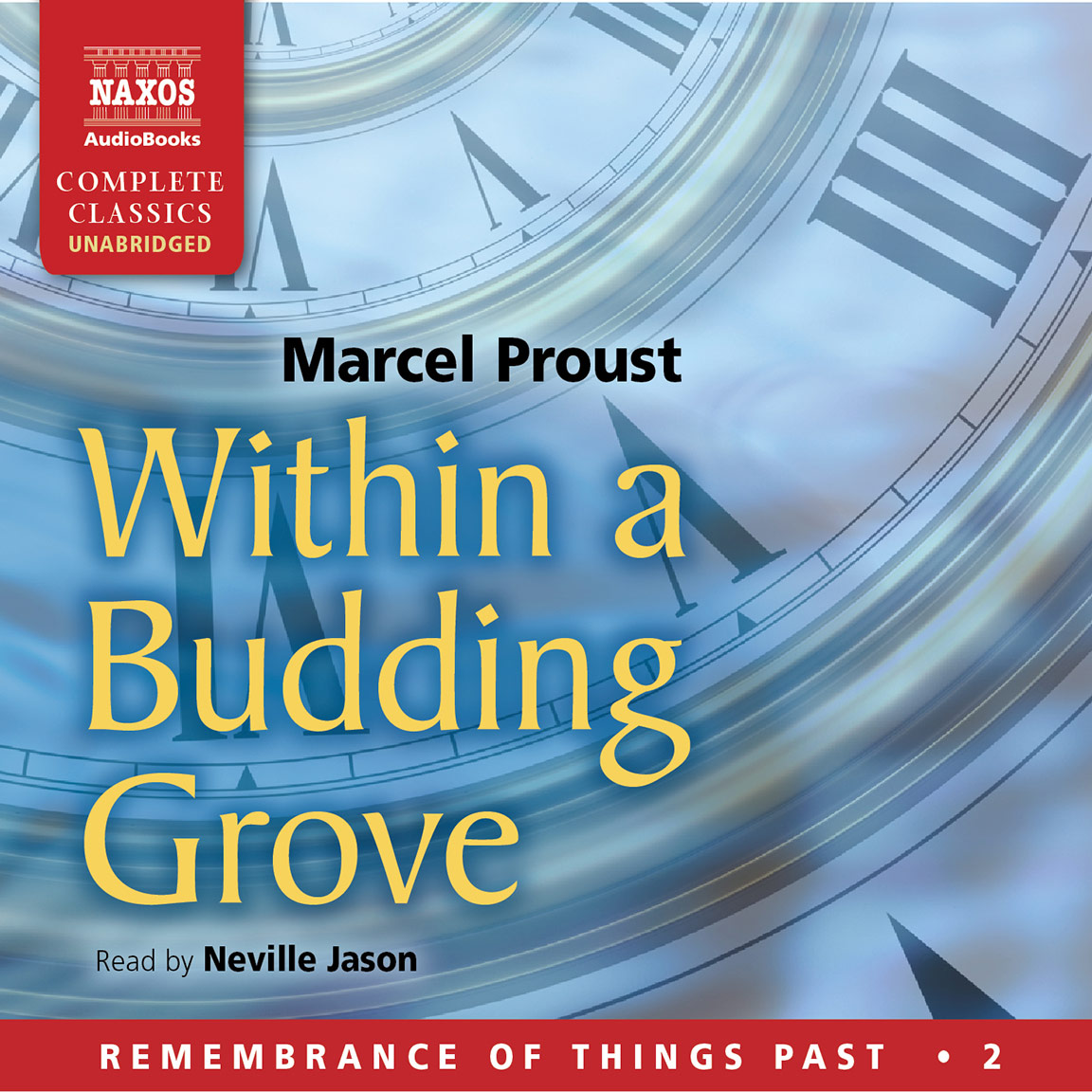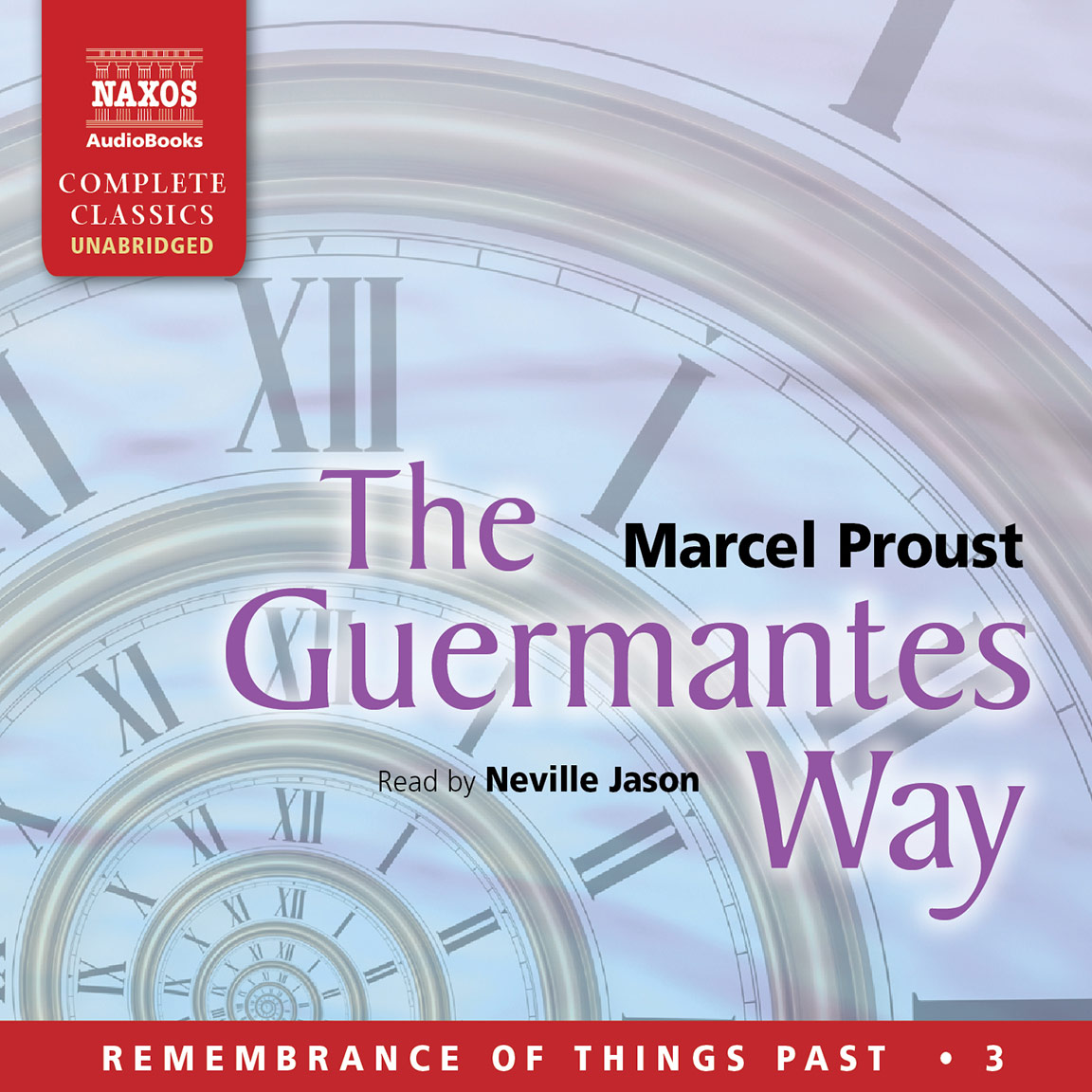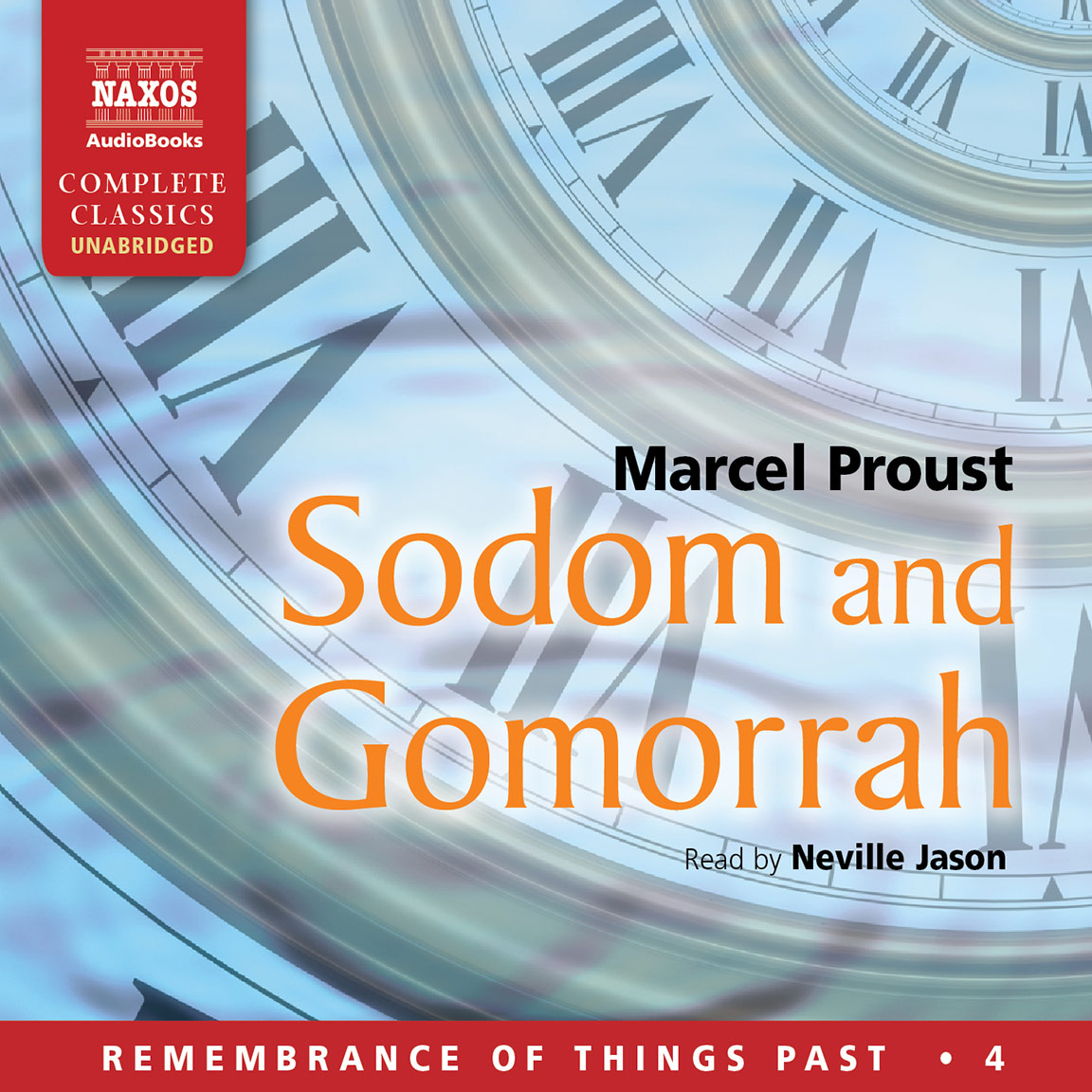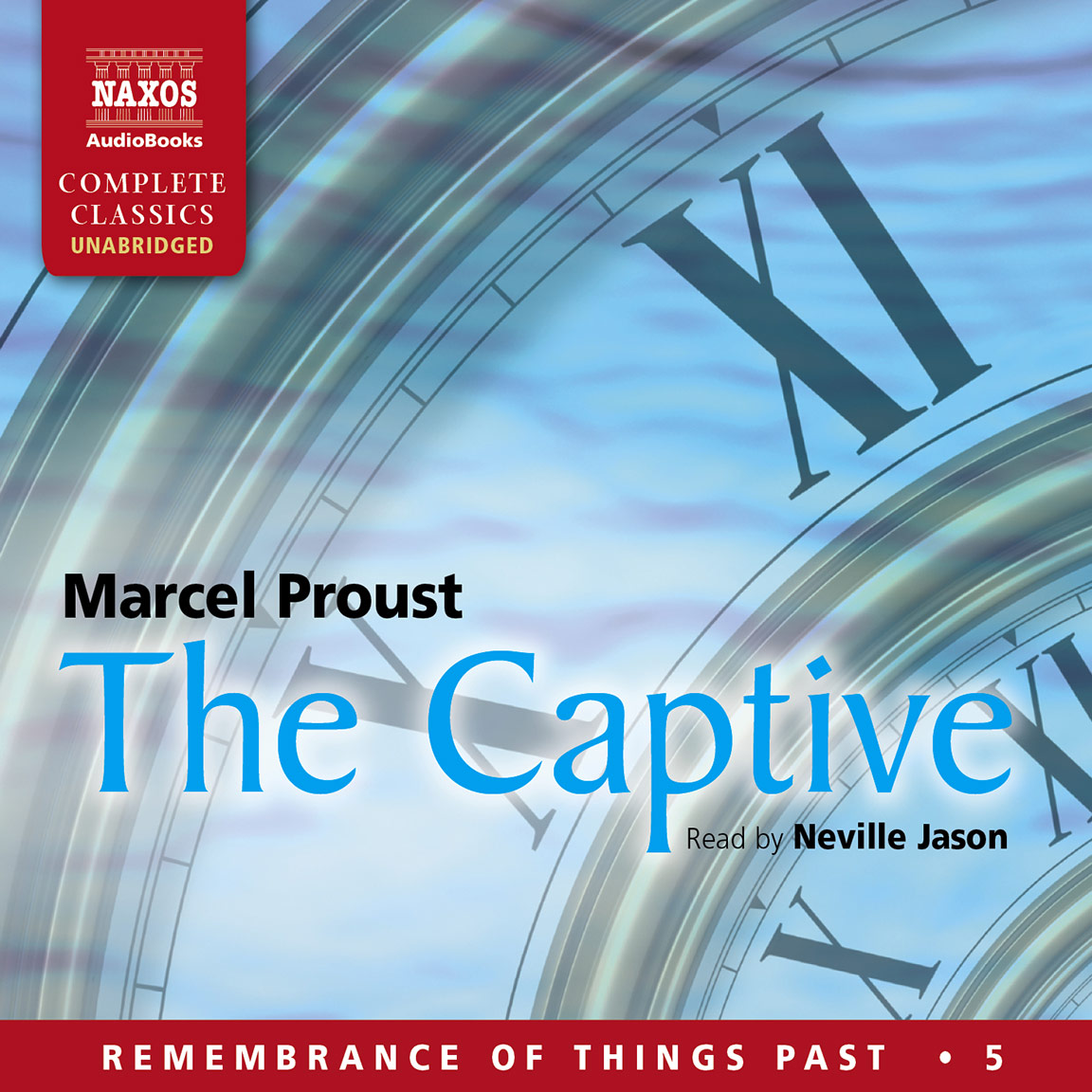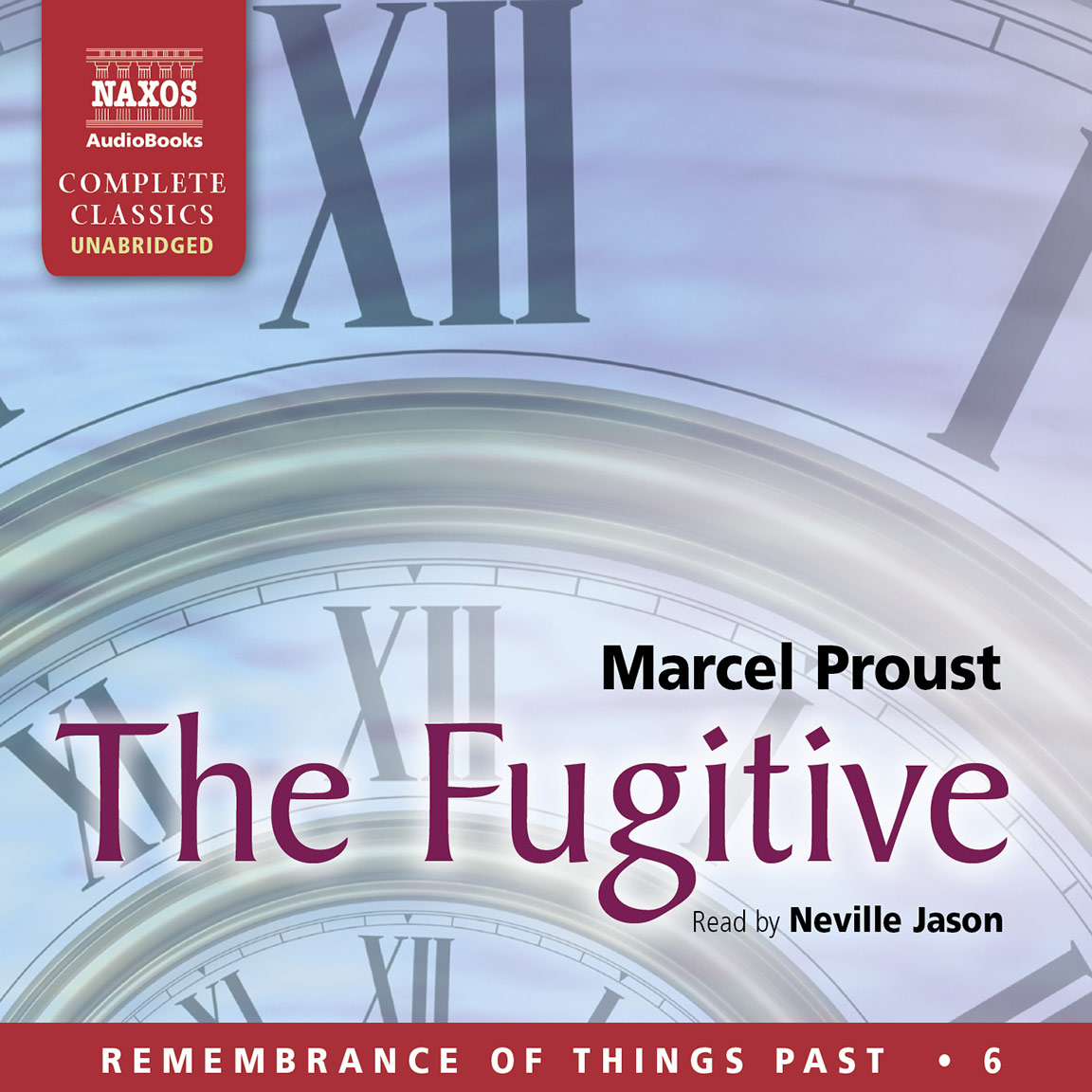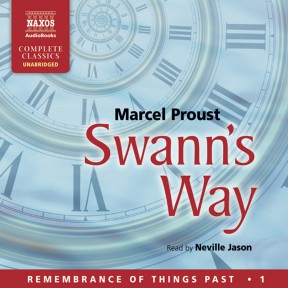
Audio Sample
Marcel Proust
Swann’s Way
Read by Neville Jason
unabridged
Remembrance of Things Past is one of the monuments of 20th-century literature. Neville Jason’s unabridged recording of the work runs to 150 hours. Swann’s Way is the first of seven volumes and sets the scene with the narrator’s memories famously provoked by the taste of that little cake, the madeleine, accompanied by a cup of lime-flowered tea. It is an unmatched portrait of fin-de-siècle France. Based on the translation by C. K. Scott Moncrieff.
-
Running Time: 21 h 33 m
More product details
Digital ISBN: 978-1-84379-607-7 Cat. no.: NA0096 Download size: 309 MB Translated by: C. K. Scott Moncrieff BISAC: FIC000000 Released: February 2012 -
Listen to this title at Audible.com↗Listen to this title at the Naxos Spoken Word Library↗
Due to copyright, this title is not currently available in your region.
You May Also Enjoy
Reviews
Naxos, the renowned producer of classical music recordings, is publishing a complete and unabridged recording of Marcel Proust’s epic work, Remembrance of Things Past (À la Recherche du Temps Perdu).
The reader is Neville Jason, who the Washington Post called ‘the marathon man’ after his 70 hour recording of Tolstoy’s War and Peace. Jason is well equipped to read this even longer work by Proust, having received the Sir John Gielgud prize for fiction while he was at RADA and having then gone on to perform with the Royal Shakespeare Company and the Old Vic Company. Indeed, while reading an earlier abridged version of Proust, he did the abridgement himself and also translated the final volume.
The first volume alone, Swann’s Way is over 23 hours on 17 CDs – six more volumes are to be added to the project and will eventually run for 140 hours and will be completed in October of this year.
I have had a rather mixed relationship with Proust’s great work. I’ve read three volumes of it so far, but as I began about fifteen years ago, perhaps that’s not very good going. While the books are fascinating, it takes me a long time to get into each one and I know that by spreading it out over such a long period, I lose some of the connections across each volume and have forgotten how the characters relate to each other. The books are hugely detailed (as you would expect with their huge size) and it can be a daunting task to start another one.
With this background I was wondering how I would cope with Swann’s Way on an audio recording. I was pleasantly surprise to find myself totally absorbed, particularly while driving. Jason’s voice is exactly right for Proust – as a professionally trained actor, his intonation and tone is perfect for the rhythmic cadences of the Scott Moncrieff translation. My own version of Proust is the newer Penguin edition which uses different translators for each volume. The translation is flatter and more colloquial, whereas Scott Moncrieff’s sounds slightly more ‘classical’ – which Neville Jason’s voice suits rather well.
Of course, you have to wonder how exactly you would get through 140 hours of audio recording. It almost seems like a life’s work – something that would accompany you over many years as you dipped in and out of it and kept coming back to it. If I was still at the stage of my life where I was driving up and down motorways it would be ideal, but for now it’s going to be an occasional treat over the next few years. What a lovely thing to own though, a rich resource for some point in the future when I have more time on my hands.
Tom Cunliffe, A Common Reader
As regular readers of Kirkville probably know, I’m a fan of Marcel Proust. I recently started re-reading A la recherche du temps perdu, but was sidetracked by moving house. Some time ago, I listened to the entire work, on a French audio recording. But not all Proustians are French speakers. Proust actually has quite a following in the US and England, and his popularity is such that Naxos AudioBooks has recently released the first part of a complete, unabridged recording of Remembrance of Things Past (also known as In Search of Lost Time).
The narrator, Neville Jason, has one of those smooth, soft English accents that lulls and entrances you. His reading is leisurely and relaxed. He takes his time, allowing you to absorb the work comfortably, without speaking too slowly, as is sometimes the case on older audiobook readings. Jason’s reading is a performance, but it also sounds like he’s sitting by your side, reading from the book, like a friend. In addition, his French accent is quite good, and when he speaks the names of French people or towns, it sounds as it should.
Swann’s Way is more than 21 hours long, and is only the first of seven volumes of Remembrance of Things Past. Naxos will be releasing each volume individually, and will most likely offer a box set with the entire text – which will be more than 120 hours – when all the titles have been released.
If you want to listen to Proust, and don’t speak French, Neville Jason’s recordings are excellent. For now, this is the only complete recording in the works. Simon Vance, who is also another wonderful narrator, has recorded Swann’s Way, but it doesn’t look like this will be a complete recording of all seven volumes of Remembrance of Things Past, as this recording was released in September, 2010, and no follow-up has yet been released.
Kirk McElhearn, Kirkville
A beautiful, atmospheric, and nostalgic work, Swann’s Way is highly recommended for literary connoisseurs and public library audiobook collections.
Library Bookwatch
All seven volumes of Remembrance of Things Past, of which this is the first, represent a staggering recording feat: 150 hours of unabridged Proust read by 78-year-old Neville Jason. To Proust writing was like making jellied beef: every shred of his memory was used. Jason calls Proust’s work his ‘magic cord’, woven to be launched into future time. For us Jason’s voice is the magic cord that draws us inexorably in.
Rachel Redford, The Oldie
Booklet Notes
The critic André Maurois described Proust’s Remembrance of Things Past as ‘one of the greatest works of the imagination of all time’. The literal translation of the work’s French title, ‘In Search of Lost Time’, contains within it a clue to the creation of this monumental work of biographical fiction. Having wasted time living a dilettante existence in the fashionable world, Proust, in middle age, decided to re-dedicate his life to art, and to attempt at last to achieve the great work of which he knew himself capable.
Remembrance of Things Past was his chance to justify his life, and to cheat death through an act of artistic creation. It was the means he would use to conquer time through recreating his lost years. Memory was the material with which he would weave the magic cord to be launched into infinity; that cord which now binds us to him, and stretches forward into the future, linking his genius to unborn generations.
The Author
Marcel Proust was born on 10 July 1871. His father, a distinguished professor of medicine, was from a Catholic family, while his mother was Jewish. Although convinced from an early age of his calling as a writer, Proust was riddled with self- doubt and wrote relatively little at the beginning of his career.
During his twenties, he co-founded a short-lived review, Le Banquet; contributed to another literary publication, La Revue Blanche; and in 1896 had his first book published, a collection of essays entitled Les Plaisirs et Les Jours.
He became an enthusiastic admirer of John Ruskin and translated his Bible of Amiens and Sesame and Lilies into French. A novel, Jean Santeuil, which was the precursor of Remembrance of Things Past, was abandoned, and eventually published long after Proust’s death, in 1954.
For much of his youth, Proust led the life of a man-about-town, frequenting fashionable Paris drawing rooms and literary salons, which were to form the background of a number of his early stories and sketches, and subsequently of Remembrance of Things Past.
The death of his adored mother in 1905 resulted in a nervous collapse and aggravated his chronic asthma and insomnia. But, despite his grief and the sense of loss, from which he never recovered, his mother’s death freed him with regard to his homosexual way of life, and allowed him to address same-sex love in his writing, albeit in a form which treated such experiences as happening to others rather than to himself.
In 1907 he moved into an apartment in the Boulevard Haussmann where, in the bedroom which he had had lined with cork to keep out noise, he embarked upon his great work À la Recherche du Temps Perdu (Remembrance of Things Past). In it, the minuteness of his observation, the depth of his psychological understanding and the vividness of his descriptive powers combined to create one of the most poetic and magical works in all literature.
Publication of Remembrance of Things Past
This long autobiographical cycle was originally published in eight sections: Du Côté de Chez Swann (Swann’s Way) in 1913; A L’Ombre des Jeunes Filles en Fleurs (Within a Budding Grove) in 1918; Le Côté de Guermantes I (The Guermantes Way I) in 1920; Le Côté de Guermantes II and Sodom et Gomorrhe I (Cities of the Plain I) in 1921; Sodom et Gomorrhe II in 1922; La Prisonnière (The Captive) in 1923; Albertine Disparue (The Sweet Cheat Gone/The Fugitive) in 1925 and Le Temps Retrouvé (Time Regained) in 1927.
Proust was obliged to publish Swann’s Way at his own expense, and even after it had appeared, had trouble finding a publisher for the next part, A L’Ombre des Jeunes Filles en Fleurs. However, when it appeared in 1918 it received considerable acclaim, and was awarded the Prix Goncourt the following year.
By the time Proust died, on 18 November 1922, the first four parts of the cycle had been published, leaving the others to appear posthumously.
Swann’s Way
In Swann’s Way, the narrator, in the person of the author, introduces us to his family: to the highly sensitive and imaginative child he was; to the mother he loved so passionately; and from whom to be parted was such agony; and to his father who, although loving him in his own way, was incapable of understanding the emotional behaviour of his nervous and delicate child.
The narrator (who, on the rare occasions he is named in the text, is given the author’s own name, Marcel) and his parents travel to the country from Paris to spend their holidays at his great-aunt’s house, in the little village of Combray. Here we meet his relatives in a succession of richly-drawn portraits: his grandmother, whose passion for nature and fresh air drives her to run up and down the garden paths in the pouring rain; his somewhat ‘common’ great aunt who takes every opportunity of putting down her more refined sister-in-law; his two spinster aunts, grown deaf through lack of interest in the dinner table conversations; and Aunt Leonie, who has retired permanently to her bed, from whence she learns, by observing the comings and goings in the street below her window, every detail of the lives of the village’s inhabitants. We meet Charles Swann, proprietor of the neighbouring estate, whose evening visit is the cause of Marcel being sent early to bed, thus depriving him of his mother’s precious goodnight kiss, which is necessary to enable him to sleep peacefully through the night.
Other neighbours also attract the interest of the precocious Marcel, whose highly developed powers of observation pierce through their urbane exteriors to the pretensions and hypocrisy beneath:
M. Legrandin, declared arch-enemy of snobbery, who cuts Marcel and his family when he is in the company of grander folk; the composer M. Vinteuil, who condemns Swann’s ‘unfortunate’ marriage, whilst turning a blind eye to his daughter’s lesbian love affair with an older woman; and Swann himself, who disparages the emptiness of high society, but devotes his life to parties, balls and sexual adventures.
Proust presents these characters with a depth of understanding of the human psyche which links him to another great figure of his time: Sigmund Freud. Proust, like Freud, understood the power of the past in influencing the present. The author’s search for his former self is part of the process of understanding the person he has become.
The two ‘Ways’ (Swann’s Way and The Guermantes Way) are different directions taken by the narrator’s family for their regular country walks, but are more than mere geographical designations. Through the thoughts, sensations and memories they invoke, each comes to represent a different aspect of life, another ‘way’ of being.
But no less memorable than the philosophical and social observations in Remembrance of Things Past are the rhapsodic and minutely observed descriptions of nature, in particular the hawthorn and lilac trees which filled the writer’s youthful soul with such passionate love.
Swann in Love brings into focus the figure of Charles Swann, whom we have already met in the previous book. In Swann’s Way we found Swann somewhat estranged from Marcel’s family due to his unfortunate marriage to Odette de Crécy, a demi-mondaine, whose dubious past prevents her from being received by ‘respectable’ people such as Marcel’s family.
Swann in Love tells the story of Swann’s love affair with Odette (which, chronologically, took place before the narrator’s birth). We are introduced to the raffish Bohemian circle of M. and Mme Verdurin, of which Odette is a member. This is an unlikely social milieu in which to find Swann, a man of fashion whose elegant presence normally graces the most aristocratic and select drawing rooms. But now he is drawn by the powerful sexual appetite which rules his life.
To begin with, it is Odette who sets out to conquer Swann’s heart. At first he is unresponsive to her style of beauty, and it is not until his aesthetic sensibilities are satisfied by the discovery of her likeness to a painting by Botticelli that his interest awakens. Once he has succumbed to her charms he finds himself at the mercy of a passion for a woman neither of his social class nor his intellectual equal. When meets the Baron de Forcheville who appears to be replacing Swann in her affections, Swann falls prey to a consuming jealousy which, together with his discoveries relating to Odette’s past, plunges him into despair.
In Place Names: The Name, once again the child Marcel is central to the narrative. Cheated by illness of his longed-for visit to the wild Breton coast, the golden streets of Florence, or the magical canals of Venice, he is obliged to substitute for these delights daily visits to the gardens of the Champs-Élysées in the company of the family’s servant, Françoise. The tedium of these visits is suddenly and miraculously lifted when he once again meets Gilberte, the daughter of Swann and Odette, whom he first saw through the hawthorn hedge at Combray and with whom he instantly fell in love.
Having rediscovered Gilberte in Paris, Marcel now becomes obsessed with her, and his childish passion parallels Swann’s love for Odette, in that Marcel, too, is obliged to suffer the indifference towards him of the one he loves. Like Swann (and perhaps like all lovers), Marcel is in love not with a real person, but with the creation of his fantasy.
Proust constantly reminds us that, as Shakespeare put it, ‘nothing is, but thinking makes it so’, a theme which runs right through Remembrance of Things Past. It suggests the author’s awareness of the dawning era of psychology, for Proust, like Freud, understood that each person’s perception is dictated by his or her personal experience. Thus the Swann Marcel knows in Combray is quite different from the Swann he sees as Gilberte’s father; and his grandparents’ view of their modest neighbour Swann is not the same as that of the occupants of fashionable Paris drawing rooms, who know him to be an intimate friend of the Comte de Paris, pretender to the French throne.
When Swann first hears the Andante from Vinteuil’s Sonata, he is stirred to the depths of his soul, because through it he senses the possibility of reclaiming his ‘lost’ life, of renouncing his superficial existence and finding once again the faith and idealism of his youth. This sense of renewal, of being offered a second chance, is identified in Swann’s mind with his love for Odette, and for this reason the musical theme becomes for him the ‘national anthem’ of their love. Just as Marcel, the narrator, is a fictional version of Proust himself, so too Swann embodies many of the author’s characteristics, and both Proust and Swann were conscious of the time which had been lost and of the brevity of life in the face of their failing health.
The book ends with the elderly Marcel, many years later, wandering through the autumnal Bois de Boulogne seeking the shade of Odette. His imagination peoples the empty alleys with the elegant
throng which appeared there in the past. He recalls the proud horses and stylish carriages and, in particular, the enchanting figure of Odette, strolling through the park surrounded by a crowd of admiring men. But as the bright vision disappears, blown away by the cold wind of reality, he meditates on the inevitability of time passing and the painful impossibility of recapturing the past.
The Life and Work of Marcel Proust
To avoid any confusion, it may be helpful to point out that Proust’s great work, À La Recherche du Temps Perdu, was originally translated into English by Charles K. Scott- Moncrieff and published in 1922 under the title Remembrance of Things Past. It was subsequently re-translated by Terence Kilmartin and appeared in 1981 as In Search of Lost Time. In 2002, a new edition appeared under the same title, with each volume assigned to a different translator. The Naxos AudioBooks recordings use the Scott-Moncrieff text and, in references to the work, I use Scott-Moncrieff’s title.
My own contact with Proust began when, as a 17-year-old schoolboy, I first read Swann’s Way. I could not have guessed then that, many years into the future, Proust would take over my life to such an extent. Over a six-year period during the 1990s, I abridged and recorded Remembrance of Things Past for Naxos Audiobooks, for whom I have now recorded this entire, uncut text.
When I was asked to write The Life and Work of Marcel Proust (see www. naxosaudiobooks.com), it occurred to me that, although the people on whom Proust based his characters were no longer living, the places he wrote about were still there, and so I travelled to France to see them.
I was delighted to discover that Illiers, where Marcel Proust spent his holidays as a child, and which figures in the book as Combray, is now marked on maps and road signs as Illiers-Combray, in official recognition of the reason for this sleepy village’s wider fame.
In a narrow street just off the market square in Illiers-Combray is the house in which Proust’s father, Adrien Proust, was born, and further along is the house of his aunt Élisabeth, now a Proust museum, where Élisabeth’s fictional counterpart, the bedridden Aunt Léonie, watched the world go by from her bedroom window. Around the corner from the house is a little boulangerie with a sign in the window announcing proudly: ‘This is where Aunt Léonie bought her madeleines’. It only occurs to me as I buy a packet of the scallop-shaped cakes, that Aunt Léonie is a creature of fiction. Never mind, Aunt Élisabeth might well have patronised the establishment, or one very like it. Up the hill there is a real house called Tansonville, the name of the house occupied by Charles Swann, and later by his daughter Gilberte and her husband Robert de Saint-Loup, and further on there is a real village called Méréglise, a name almost identical to the fictional Méséglise.
Water lilies are still reflected in the glassy surface of the river Loir, which in the book bears the more poetic name the Vivonne, and beyond the stream lies the Pré Catalan, the enchanting park created by Proust’s horticulturally minded Uncle Jules. From Illiers I travelled on to Cabourg, a seaside resort on the Normandy coast, the original of the fictional Balbec. Here I found the Grand Hotel in all its Edwardian splendour. It was rebuilt after Proust spent holidays there as a child, but he returned as an adult, and sections of Remembrance of Things Past were written beneath its roof. As in Within a Budding Grove, the great glass windows of the restaurant look out over the promenade to the beach below, and with a little imagination, that group of budding young girls in bikinis is transformed into the little band of ‘jeunes filles en fleurs’ outlined against the sea.
I travelled on to Paris, visiting 102 Boulevard Haussmann, Proust’s home for many years, where he wrote so much of Remembrance of Things Past. The building is still owned by the same bank that purchased it from Proust’s aunt, when her inconsiderate decision to sell it forced him to move. His bedroom is still there, but unfurnished, and to see the room as it was, one is obliged to visit the Musée Carnavalet, where Proust’s bed, chaise- longue and other effects are displayed in a reconstruction of the famous cork-lined room.

